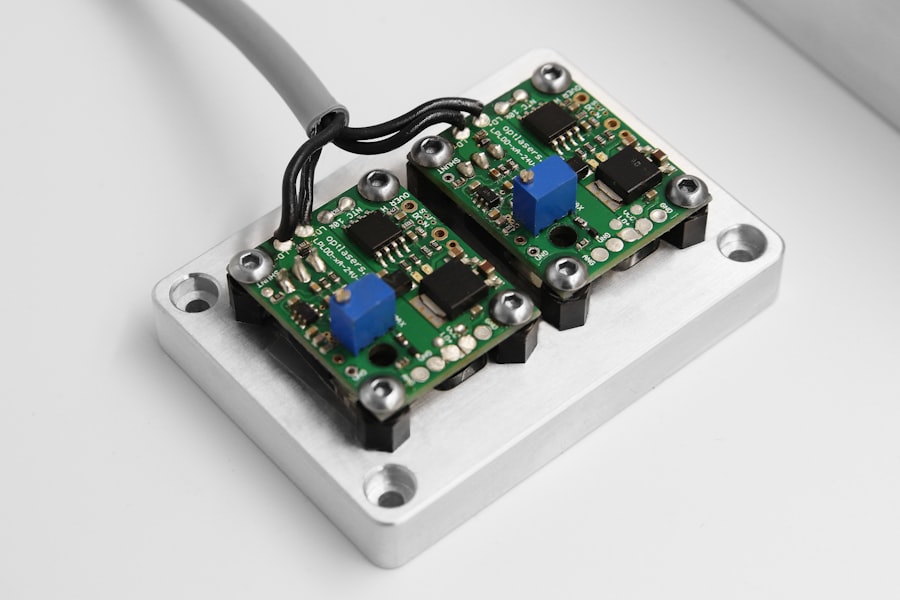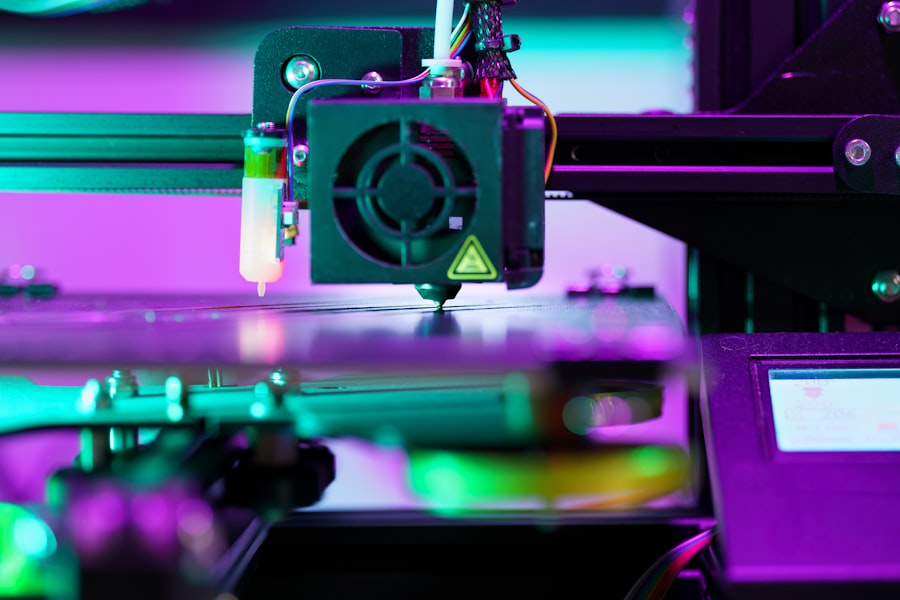Laser hair removal is a popular cosmetic procedure that utilizes concentrated beams of light to target and eliminate unwanted hair. This method is favored for its precision and effectiveness, making it a go-to choice for many seeking a long-term solution to hair removal. The laser works by emitting a specific wavelength of light that is absorbed by the pigment in the hair follicles.
This absorption generates heat, which damages the follicle and inhibits future hair growth. Unlike traditional methods such as shaving or waxing, laser hair removal offers a more permanent solution, significantly reducing hair regrowth over time. As you consider this treatment, it’s essential to understand that laser hair removal is most effective on individuals with light skin and dark hair.
The contrast between the skin tone and hair color allows the laser to target the follicles more effectively. However, advancements in technology have made it possible for people with various skin tones and hair colors to benefit from this procedure. It’s crucial to consult with a qualified professional who can assess your specific needs and determine the best approach for you.
Understanding these basics will help you make informed decisions as you embark on your journey toward smoother skin.
Key Takeaways
- Laser hair removal uses concentrated light to target and destroy hair follicles, resulting in long-term hair reduction.
- Before getting laser hair removal, it’s important to avoid sun exposure and certain hair removal methods to ensure the best results.
- When choosing a laser hair removal provider, consider their experience, technology, and safety measures to ensure a successful treatment.
- The laser hair removal process involves cleansing the treatment area, applying a cooling gel, and using the laser to target the hair follicles.
- After laser hair removal, it’s important to follow aftercare instructions and attend maintenance sessions to ensure long-lasting results.
Preparing for Laser Hair Removal: What to Expect
Before undergoing laser hair removal, preparation is key to ensuring a successful outcome. You should schedule a consultation with your provider, during which they will evaluate your skin type, hair color, and medical history. This assessment is vital as it helps determine the most suitable laser technology for your needs.
During this initial visit, you can also discuss any concerns or questions you may have about the procedure, allowing you to feel more at ease.
First, avoid sun exposure and tanning beds, as tanned skin can increase the risk of complications during treatment.
Additionally, refrain from waxing or plucking the hair in the treatment area for at least four weeks prior to your session. These methods can remove the hair follicle, which is essential for the laser to target effectively. Instead, shaving is recommended a day or two before your appointment, as it leaves the follicle intact while ensuring that the laser can penetrate effectively.
Choosing the Right Laser Hair Removal Provider

Selecting the right provider for your laser hair removal treatment is crucial for achieving optimal results. You should look for a licensed and experienced practitioner who specializes in laser hair removal. Research their credentials and read reviews from previous clients to gauge their expertise and success rates.
A reputable provider will be transparent about their qualifications and will take the time to answer any questions you may have. During your consultation, pay attention to how comfortable you feel with the provider. A good practitioner will take the time to explain the procedure in detail, discuss potential risks, and tailor a treatment plan specifically for you.
It’s also important to inquire about the type of laser technology they use, as different lasers are suited for different skin types and hair colors. By choosing a knowledgeable and trustworthy provider, you can ensure that your experience is safe and effective.
The Laser Hair Removal Process: Step by Step
| Step | Description |
|---|---|
| 1 | Skin is cleaned and prepped for the procedure |
| 2 | Laser equipment is adjusted based on skin type and hair color |
| 3 | Laser is applied to the treatment area, targeting hair follicles |
| 4 | Cooling gel or device may be used to minimize discomfort |
| 5 | Post-treatment care instructions are provided |
The laser hair removal process typically begins with a thorough cleansing of the treatment area to remove any oils or products that may interfere with the procedure. Once your skin is prepped, protective eyewear will be provided to shield your eyes from the laser light. The practitioner may apply a topical anesthetic to minimize any discomfort during the treatment, although many people report only feeling a slight sensation akin to a rubber band snapping against the skin.
Once you’re ready, the practitioner will use a handheld device to deliver laser pulses to the targeted areas. The duration of each session can vary depending on the size of the area being treated; smaller areas like the upper lip may take just a few minutes, while larger areas like the legs may require up to an hour. After each pulse, you may notice a cooling sensation as the device helps protect your skin from heat damage.
Aftercare and Maintenance for Laser Hair Removal
After your laser hair removal session, proper aftercare is essential for achieving the best results and minimizing any potential side effects. You should expect some redness or swelling in the treated area, similar to a mild sunburn. Applying a soothing aloe vera gel or cold compress can help alleviate discomfort and reduce inflammation.
It’s also important to avoid sun exposure for at least two weeks following treatment, as your skin will be more sensitive during this time. In terms of maintenance, multiple sessions are typically required for optimal results, as hair grows in cycles and not all follicles are active at once. Most individuals need between three to seven sessions spaced several weeks apart to achieve significant hair reduction.
Your provider will create a personalized treatment schedule based on your specific needs and goals. Additionally, you may notice some shedding of hair in the weeks following each session; this is normal and indicates that the treatment is working effectively.
Potential Risks and Side Effects of Laser Hair Removal

While laser hair removal is generally considered safe, it’s important to be aware of potential risks and side effects associated with the procedure. Common side effects include temporary redness, swelling, or discomfort in the treated area. These symptoms usually subside within a few hours to a few days after treatment.
However, in rare cases, more serious side effects can occur, such as blistering, scarring, or changes in skin pigmentation. To minimize these risks, it’s crucial to choose an experienced provider who uses appropriate technology for your skin type. Additionally, following pre- and post-treatment care instructions can significantly reduce the likelihood of complications.
If you experience any unusual symptoms or prolonged discomfort after your session, don’t hesitate to contact your provider for guidance.
FAQs About Laser Hair Removal
As you consider laser hair removal, you may have several questions about the procedure. One common inquiry is whether it is painful; while individual experiences vary, most people describe the sensation as tolerable, often likening it to a rubber band snapping against the skin. Another frequently asked question pertains to how long results last; while many individuals experience permanent hair reduction after completing their treatment sessions, some may require occasional maintenance sessions over time.
You might also wonder about the ideal candidates for laser hair removal. Generally speaking, individuals with light skin and dark hair tend to see the best results due to the contrast that allows lasers to target follicles effectively. However, advancements in technology have made it possible for those with various skin tones and hair colors to benefit from this treatment as well.
If you’re still unsure about whether this procedure is right for you, discussing your concerns with a qualified provider can help clarify any uncertainties.
The Future of Laser Hair Removal: Advancements and Innovations
The field of laser hair removal continues to evolve with advancements in technology and techniques that enhance safety and effectiveness. One exciting development is the introduction of new laser systems designed specifically for diverse skin types and tones. These innovations allow practitioners to treat a broader range of clients while minimizing risks associated with pigmentation changes.
Additionally, researchers are exploring combination therapies that integrate laser treatments with other modalities for even better results. For instance, pairing laser hair removal with topical treatments may enhance efficacy and improve overall skin health post-treatment. As technology progresses, you can expect even more refined techniques that promise quicker sessions with less discomfort and downtime.
In conclusion, understanding laser hair removal—from its basic principles to aftercare—is essential for anyone considering this popular cosmetic procedure. By preparing adequately, choosing a qualified provider, and following post-treatment guidelines, you can enjoy smoother skin with lasting results while minimizing potential risks. As advancements continue in this field, you can look forward to even more effective solutions tailored to meet individual needs in the future.
If you are interested in learning more about laser hair removal, you may want to check out this article on




